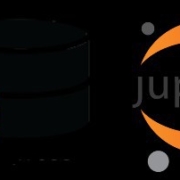Tech companies around the globe have started integrating Artificial Intelligence (AI) into their products for faster processing and substantially reduced manual work. Whether it is search engine results from Google or Siri from Apple, AI has been utilized with perfection by multiple industries to streamline their business practices for better service delivery. However, there are still various tech sub-industries and niches that can take help from AI to finely tune their products and come up with even more customer friendly services. Know Your Customer, also known as KYC, the industry has a lot to benefit from Artificial Intelligence. More and more businesses are being subjected to regulations that require these businesses to carry out full proof KYC verification with the help of an official identity document before a customer is registered. It is high time that AI becomes a cornerstone for KYC software industry for improving the standards of service in this field.
What Is KYC?
As explained above, KYC stands for Know Your Customer. It is a business practice that is conducted before any product is sold or service is utilized by an end-user. The service provider is required to collect comprehensive personal information from their customers. Verifying those credentials is the responsibility of the company that is collecting information from their customers. Most of the times, an official identity document is used to confirm the identity details of a customer. What aspects of a person’s identity are verified, depends on the regulatory guidelines or the nature of business performing a KYC verification.

Source de l’article sur DZONE (AI)










